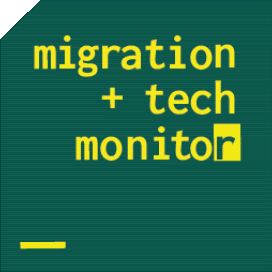The sudden end of CBP One leaves thousands of asylum seekers in limbo at the U.S. and Mexico border
By Veronica Martinez, MTM Fellow 2023
Border of Mexico and Arizona, 2022
CIUDAD JUAREZ: With the return of Donald Trump to the White House this past Monday came an array of executive orders setting up the immigration agenda of the Republican Administration. Putting an end to the use of the CBP One application was one of the first changes made by Trump during the first hours of his second term.
Around 30,000 people were left in limbo and stranded at the border as their appointments for screening interviews were cancelled from one day to another, said experts at the border.
Even with its flaws, CBP One was the only viable and legal route to request asylum, said Crystal Sandoval, director of strategic initiative at Las Americas Advocacy Center. Now, there’s no clear mechanism on how to access asylum in the United States.
“Yes, CBP One had a lot of deficiencies, like requiring a good mobile to use the app and a stable access to the internet”, said Sandoval. “I don’t agree with the app because with it we were still letting down the most vulnerable, but my position has always been that there has to be a wider access to asylum and when you terminate the app you also eliminate the actual route to access asylum”.
In the 20 months that the app was active, nearly one million people set up an appointment to present themselves at the border and claim asylum. In average, 1,400 appointments were scheduled daily.
In that same period in which the CBP One app was active, Border Patrol reported more that 2,000,484 encounters at the border. The amount of people crossing the border irregularly tripled the amount of those opting for the regular alternatives that the U.S. government put in place to follow the asylum process.
Photo credit: Veronica Martinez September, 2023
Asylum seekers sit outside of the offices of the Population State Counsel in Ciudad Juárez (COESPO) where they can have free access to a WIFI network.
Many users and non-profit organizations argued that the app was inefficient. For Sandoval, border communities and people-on-the-move are currently in a limbo as it is uncertain how the recent executive orders will be implemented.
This is not the first time that the change of administration has come with changes in immigration policy and a direct impact across the border. Back in 2019, the Trump administration implemented the Migrant Protection Protocol (MPP), program also known as “Remain in México” that required asylum seekers to stay in border communities across the border while they waited for their asylum request cases to be heard in court.
During the COVID-19 pandemic, the Trump administration also implemented Title 42 which allowed immigration officers to reject asylum requests at the border without following the required processing. In 2022, Joe Biden suspended new enrollments in the MPP program and in May 2023, Title 42 expired, changing the immigration policy landscape at the U.S. and Mexico border.
Now once again, the new Trump administration changes the rules for asylum seekers and non-profit organizations by terminating the CBP One app. The administration has also signalled the possibility of MPP being implemented again, explains Rodolfo Rubio Salas, academic researcher at the College of Chihuahua and member of the Migration Issues Interdisciplinary Group.
Photo Credit: Veronica Martinez April, 2023
Asylum seeker shows his mobile phone in which he has installed the CBP One app to request an appointment for an initial screening interview.
“What I’ve seen is that you have to adapt to the new circumstances. These changes, most of the time, are non-negotiable and are simply what the United States’ government dictates”, said Rubio Salas. “For now, it is urgent to clarify what these new circumstances will be in order to act accordingly.”
When leaving their home countries, many people quit their jobs and travelled with limited resources considering that they would soon cross to the United States with legal status to work or with a support network to help them while they went through the asylum process, explained Sandoval.
For non-profits at the border, the next steps of action are to assist those left homeless in Mexico now that their appointments have been cancelled and to procure physical and mental health services at the border.
“This is very tiring for us and for the people that we assist, but [the constant policy changes] have made us strong and resilient in a way that we have become chameleons adjusting to the current needs”, said Sandoval. “We now have more wisdom, and we know where to turn and ask for help."
Want to learn more?
Check out Veronica’s interview with The Border Chronicle on the digital border wall and the impacts of the CBP One app



